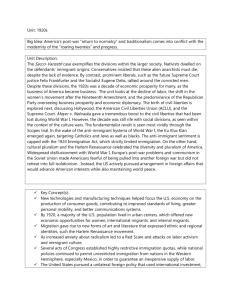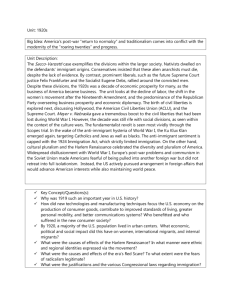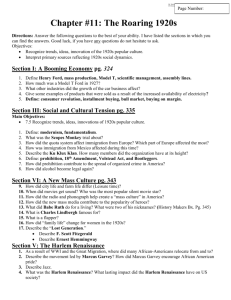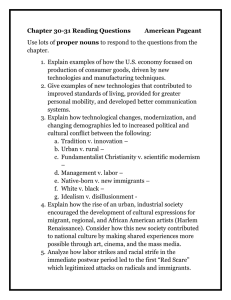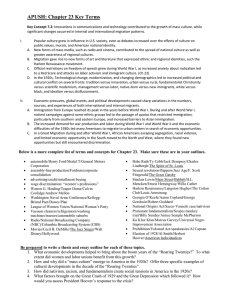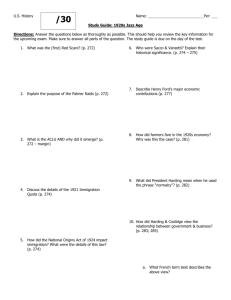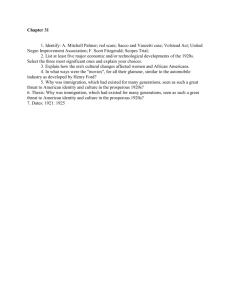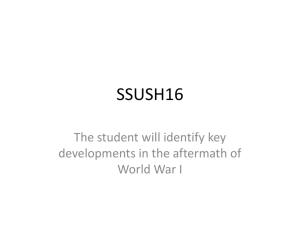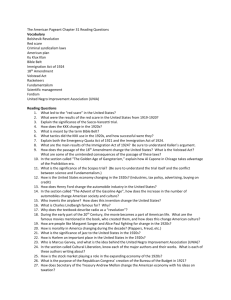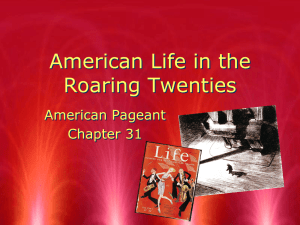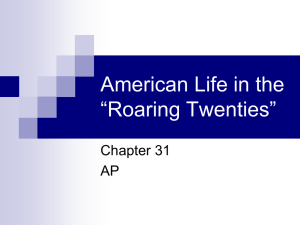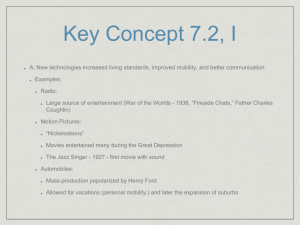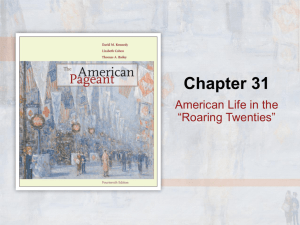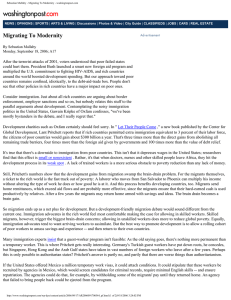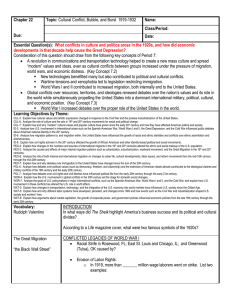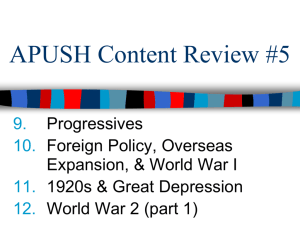Chapter 31-32 Identifications 2015
advertisement
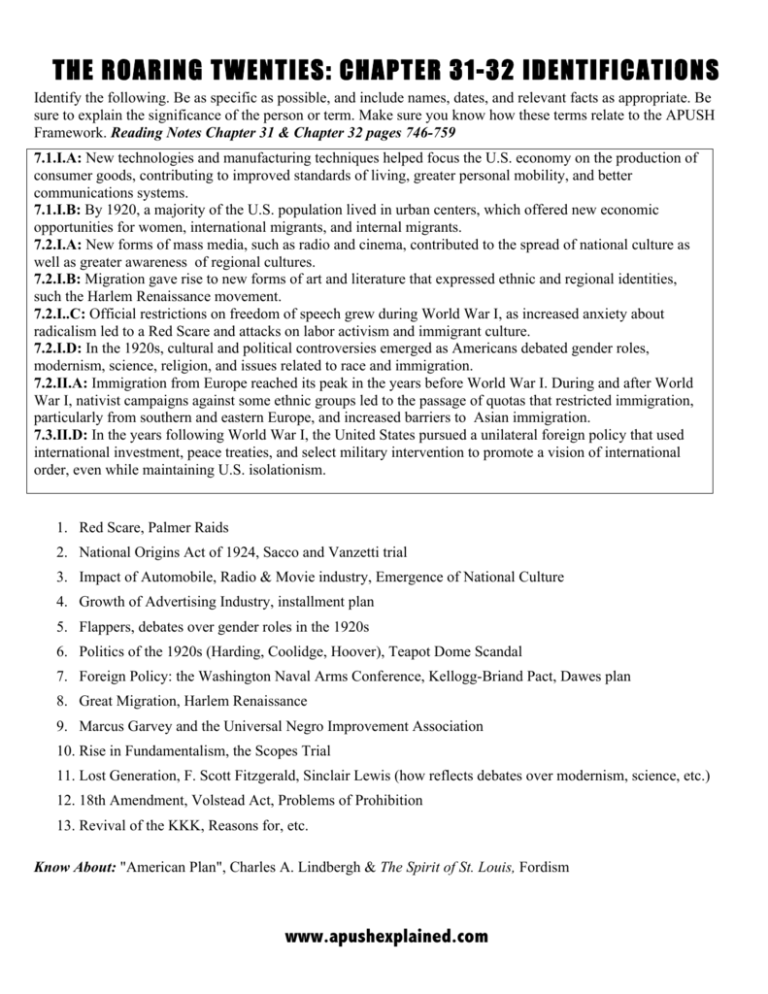
THE ROARING TWENTIES: CHAPTER 31-32 IDENTIFICATIONS Identify the following. Be as specific as possible, and include names, dates, and relevant facts as appropriate. Be sure to explain the significance of the person or term. Make sure you know how these terms relate to the APUSH Framework. Reading Notes Chapter 31 & Chapter 32 pages 746-759 7.1.I.A: New technologies and manufacturing techniques helped focus the U.S. economy on the production of consumer goods, contributing to improved standards of living, greater personal mobility, and better communications systems. 7.1.I.B: By 1920, a majority of the U.S. population lived in urban centers, which offered new economic opportunities for women, international migrants, and internal migrants. 7.2.I.A: New forms of mass media, such as radio and cinema, contributed to the spread of national culture as well as greater awareness of regional cultures. 7.2.I.B: Migration gave rise to new forms of art and literature that expressed ethnic and regional identities, such the Harlem Renaissance movement. 7.2.I..C: Official restrictions on freedom of speech grew during World War I, as increased anxiety about radicalism led to a Red Scare and attacks on labor activism and immigrant culture. 7.2.I.D: In the 1920s, cultural and political controversies emerged as Americans debated gender roles, modernism, science, religion, and issues related to race and immigration. 7.2.II.A: Immigration from Europe reached its peak in the years before World War I. During and after World War I, nativist campaigns against some ethnic groups led to the passage of quotas that restricted immigration, particularly from southern and eastern Europe, and increased barriers to Asian immigration. 7.3.II.D: In the years following World War I, the United States pursued a unilateral foreign policy that used international investment, peace treaties, and select military intervention to promote a vision of international order, even while maintaining U.S. isolationism. 1. Red Scare, Palmer Raids 2. National Origins Act of 1924, Sacco and Vanzetti trial 3. Impact of Automobile, Radio & Movie industry, Emergence of National Culture 4. Growth of Advertising Industry, installment plan 5. Flappers, debates over gender roles in the 1920s 6. Politics of the 1920s (Harding, Coolidge, Hoover), Teapot Dome Scandal 7. Foreign Policy: the Washington Naval Arms Conference, Kellogg-Briand Pact, Dawes plan 8. Great Migration, Harlem Renaissance 9. Marcus Garvey and the Universal Negro Improvement Association 10. Rise in Fundamentalism, the Scopes Trial 11. Lost Generation, F. Scott Fitzgerald, Sinclair Lewis (how reflects debates over modernism, science, etc.) 12. 18th Amendment, Volstead Act, Problems of Prohibition 13. Revival of the KKK, Reasons for, etc. Know About: "American Plan", Charles A. Lindbergh & The Spirit of St. Louis, Fordism www.apushexplained.com
